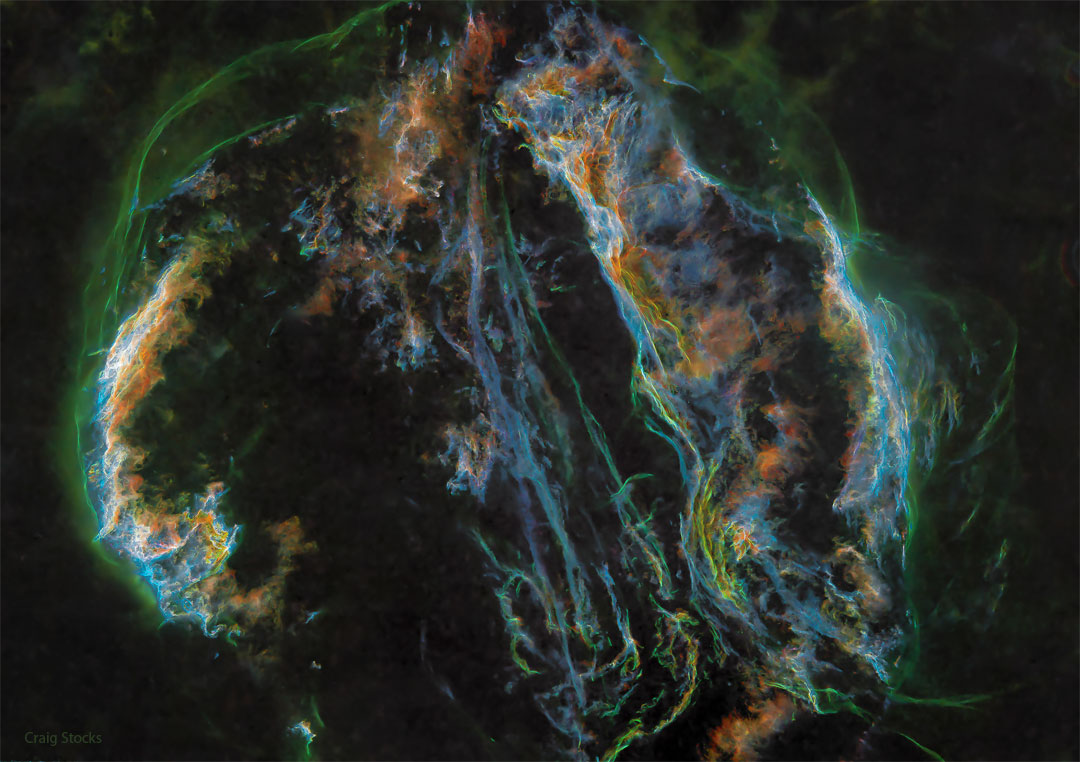2022年6月22日
Supernova Remnant: The Veil Nebula
Image Credit & Copyright: Craig Stocks (Utah Desert Remote Observatories)
Explanation: Ten thousand years ago, before the dawn of recorded human history, a new light would have suddenly have appeared in the night sky and faded after a few weeks. Today we know this light was from a supernova, or exploding star, and record the expanding debris cloud as the Veil Nebula, a supernova remnant. Imaged with color filters featuring light emitted by sulfur (red), hydrogen (green), and oxygen (blue), this deep wide-angle view was processed to remove the stars and so better capture the impressive glowing filaments of the Veil. Also known as the Cygnus Loop, the Veil Nebula is roughly circular in shape and covers nearly 3 degrees on the sky toward the constellation of the Swan (Cygnus). Famous nebular sections include the Bat Nebula, the Witch’s Broom Nebula, and Fleming’s Triangular Wisp. The complete supernova remnant lies about 1,400 light-years away.
Tomorrow’s picture: open space
超新星遗迹:面纱星云
影像提供与版权: Craig Stocks (Utah Desert Remote Observatories)
说明: 一万年前,在人类信史拉开序幕之前,当时的夜空中突然出现一颗明亮的新星,然后在数周后消失暗去。如今天我们知道这颗“新星”是超新星,亦即发生爆炸的恒星,并留下一团扩张的碎片云,成为记录里的超新星遗迹─面纱星云。上面这幅使用彩色滤镜拍摄的广角深空影像,整合了来自硫(红色)、氢(绿色)和氧(蓝色)的辐射,并经过特别处理移除恒星,以突显面纱星云的明亮丝状云气。亦称为天鹅座环的面纱星云,大抵呈环形,在天空中涵盖了天鹅座将近3度的区域。在面纱星云著名的分区之中,包括蝙蝠星云、女巫帚星云和弗莱明的三角星云等。此超新星遗迹离我们约1,400光年远。
明日的图片: open space







